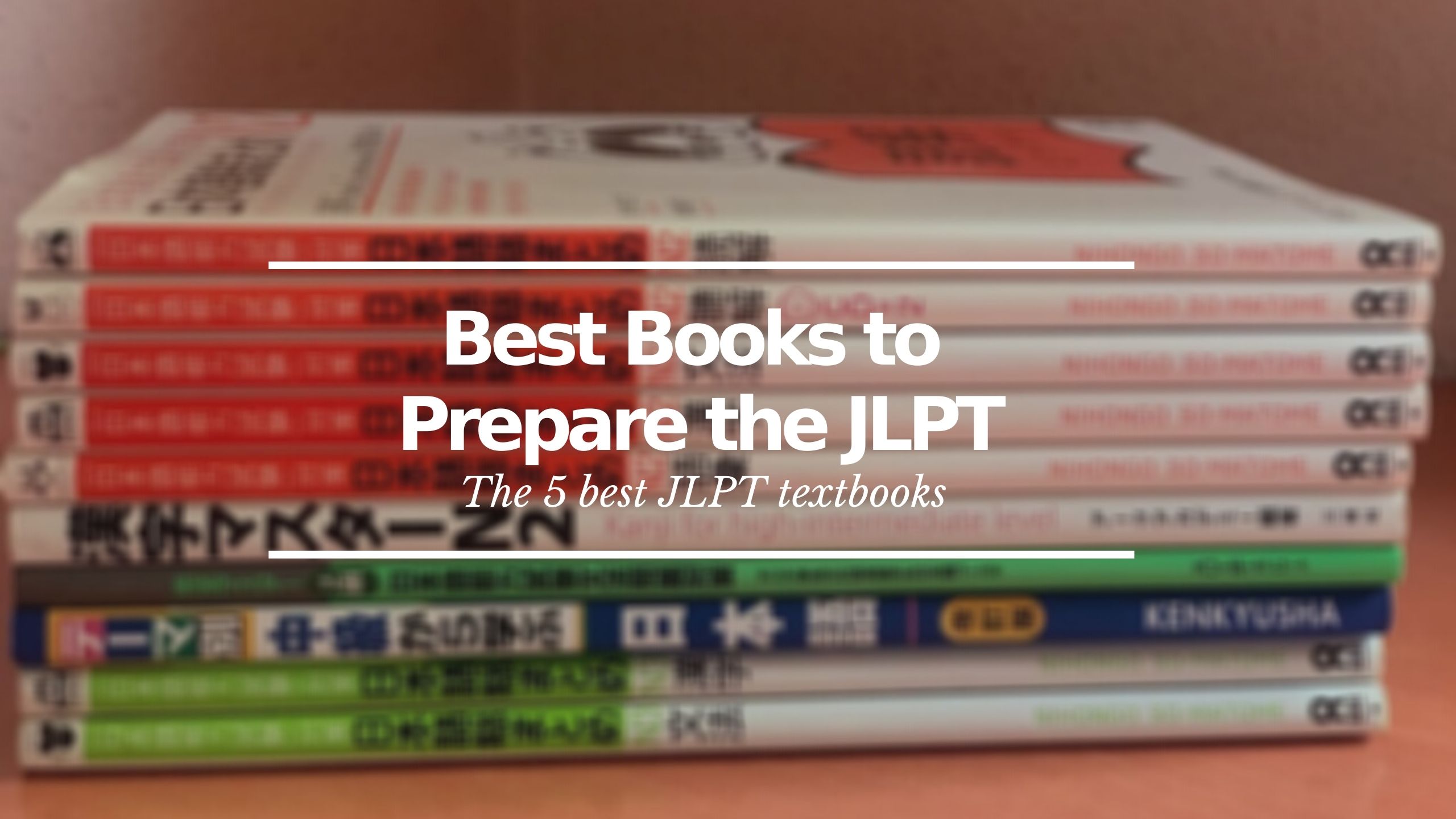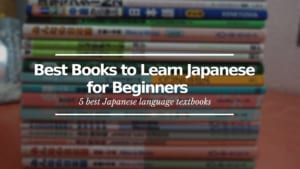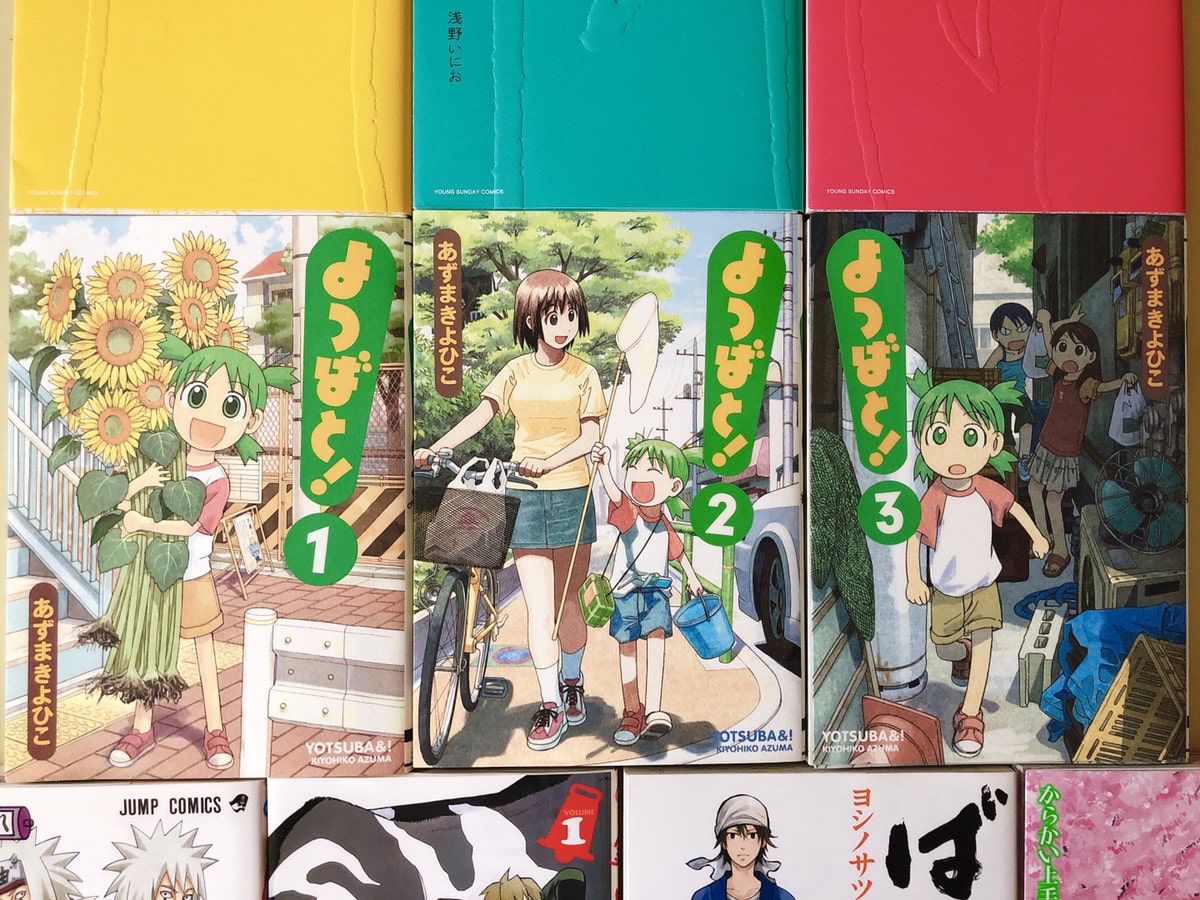Best Books to Prepare the JLPT
The 5 best JLPT textbooks

The goal of most Japanese students is to pass one of the Japanese-Language Proficiency Test or JLPT levels. For those who don’t know it, the JLPT (Nihongo noryoku shiken a.k.a Noken in Japanese) is the official Japanese level exam, like the TOEFL or the First Certificate in English. It’s basically the title that you’re going to be asked to opt for many job interviews in Japan or in Japanese companies where language is a requirement.
It takes place twice a year, in July and December and has 5 levels, with 5 being the lowest and 1 being the highest. It’s considered that, in order to work in a Japanese company, you must to have an N2. The exam consists of three parts: kanji and vocabulary, grammar and reading comprehension and listening.
*Please note that this article contains affiliate links.
Skills required for each level
If your first time facing a JLPT, you may be lost about the skills you need for each level and you’re wondering which one you should try. Hens a synthesis from the official requirements.
N1
- Reading: The person is able to read complex writings and deep contents on various topics such as newspaper editorials and critiques, and comprehend their structures.
- Listening: The person is able to understand conversations, news reports, and lectures, spoken at natural speed and grasp details such as the relationships amongst the people involved.
N2
- Reading: The person is able to read materials written on a variety of topics, such as articles in newspapers and magazines as well as simple critiques, and understand the contents and the intent of the writer.
- Listening: The person is able to comprehend conversations and news reports, spoken at nearly natural speed in everyday situations, as well as understand the relationships amongst the people involved.
N3
- Reading: The person is able to read and understand written materials with specific contents concerning everyday topics. Also, one has the ability to read and understand information as newspapers headlines and read slightly difficult writings.
- Listening: The person is able comprehend coherent conversations in everyday situations, spoken at almost natural speed, and grasp the relationships amongst the people involved.
N4
- Reading: The person is able to read and understand small texts about familiar daily topics written in basic vocabulary and kanji.
- Listening: The person is able to listen and comprehend daily life conversations if they are spoken slowly.
N5
- Reading: The person is able to read and understand typical expressions and sentences written in hiragana, katakana, and basic kanji.
- Listening: The person is able to listen and comprehend conversations about daily life topics and classroom situations, and is able to pick up necessary information from short conversations spoken slowly.
Books to Prepare the JLPT
In another article I wrote about the best books to study Japanese, but the JLPT has a certain structure and specific characteristics, so in addition to the books used in academies to study Japanese, many students decide to buy extra books to prepare for the exam. These books aren’t designed to teach Japanese, but to help you to be ready for the test, therefore they follow different methodologies.
Most JLPT preparation books start at level 3, some at level 4, but almost none at level 5, since it’s a fairly basic level that can be achieved with normal books for studying Japanese.
New Kanzen Master
New Kanzen Master is the big favorite for most of Japanese language students when preparing the JLPT, especially in higher levels such as N2 and N1. It’s without a doubt the most complete book (and also the thickest) of those on the market, although it’s not actually a book, but up to five (Kanji, Grammar, Vocabulary, Listening & Reading Comprehension). But if you can’t buy all five, the grammar book is a must.
In the first part of the book, you can find a review of all the grammar that goes into the exam and then goes deeper into some grammar points. But surely if something differentiates this book from the others it’s that it also includes strategies for the exam. Finally, something common in the JLPT preparation books, includes exam simulations to practice and prove your level.
The books are available here:
New Kanzen Master Grammar JLPT Level N1
New Kanzen Master Grammar JLPT Level N2
New Kanzen Master Grammar JLPT Level N3
New Kanzen Master Grammar JLPT Level N4
Nihongo So-matome
So-matome is the other big favorite for the students who are going to take the JLPT. Some say that it’s more practical and simpler than the Kanzen Master serie, but that for higher levels (N2-N1) it’s not enough. However, it can come in handy for a first contact, and then dig deeper with the Kanzen Master. As with the Kanzen Master, there are about 5 books per level (Kanji, Grammar, Vocabulary, Listening & Reading Comprehension), and then they also have a book only with questions to prepare for the exam.
The dynamics of the books is quite simple. In each lesson you have an explanation of a specific topic (for example, in the grammar book, of certain grammatical forms) and then at the end of the lesson you have some example exercises simulating a JLPT exam.
The books are available here:
Nihongo So-matome 500 Practice Questions for the JLPT level N1
Nihongo So-matome 500 Practice Questions for the JLPT level N2
Nihongo So-matome 500 Practice Questions for the JLPT level N3
Nihongo So-matome 500 Practice Questions for the JLPT level N4-N5
Kanji Master
One of the most difficult parts of studying Japanese is the kanji. And from level 3 of the JLPT to level 2 there is a very big difference regarding the number of kanjis you have to know. In Japanese schools to teach kanjis up to N3 they use the kanji books of Minna no Nihongo (I wrote about those books here) but when it comes to preparing for N2 or N1 you need a higher level. That’s when students begin to use the Kanji Master books. These books are very complete and well designed, and aren’t only for JLPT but for the study of Japanese in general. So although it’s especially recommended from N2 onwards, if you are still at lower levels but want to learn kanji more deeply, I recommend buying the Kanji Master from the other levels as well.
The books are available here:
JLPT Official Practice Workbook
The JLPT is organised worldwide by two organisations, the Japan Foundation and JEES (Japan Educational Exchanges and Services). As the name implies, this book is an official book published by these organisations. However, these books are not used to study the syllabus that will enter the exam, but rather to carry out test exams. It contains questions that have been asked in previous exams, since 2010. It can come in handy as an extra support for studying and to see what these exams are like and if you can reach the required level.
The books are available here:
JLPT Official Practice Workbook N1
JLPT Official Practice Workbook N2
JLPT Official Practice Workbook N3
JLPT Official Practice Workbook N4
JLPT Official Practice Workbook N5
A Dictionary of Japanese Grammar
I introduced these books in the article on best books to learn Japanese for beginners. These books aren’t made especially for the JLPT, but for the study of Japanese. But they can help or support you to study grammar concepts that you may not understand or may not be clear about in any of the other books I have mentioned.
They work as other dictionaries: they present the information in alphabetical order, but instead of meanings they show the reader the different grammar points of the Japanese language. Grammar is presented in a very detailed way: every entry includes a translation into English, similar structures in Japanese or related expressions and much more.
The books are available here:
3 Book Bundle Set (Basic, Intermediate, Advanced)
How were my 5 best books to prepare the JLPT? Has it been useful to you? If at the moment you are still starting to study Japanese or you want to start and you aren’t interested in JLPT but learning the language, I recommend these other articles for Japanese language students!
▽Check out these recommended Japanese schools to learn Japanese efficiently!▽
Learning Japanese by textbooks is not the only way but the essential way to learn Japanese correctly. If you want to learn Japanese in a different way, it is also recommended to use mobile apps or read manga in Japanese!
▽Related Articles ▽
▼Editor’s Picks▼
Written by
From Barcelona to Tokyo. Coffee & Adventure lover.
I started to like Japan because of the anime, music and dramas, but after my first trip to the country I found what I love the most: traveling around, the culture and history. I have travelled a lot in Japan, but I still have many places to discover that I want to share with you. Let’s discover Japan together!
Also, as a foreigner living in Japan for over 6 years I understand what kind of things are difficult when you move here and I want to help other people in the same situation that I have in the past.















